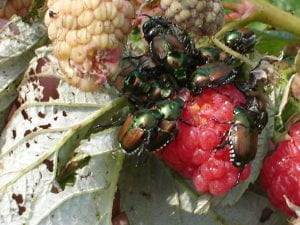Several insects cause various physical damage to raspberry fruit. These include:
Sap beetles – There are 2 members of this insect family that are a problem on raspberries. They are similar in size, appearance and damage caused to fruit. The first is the picnic beetle (Glischrochilus quadrisignatus):

The second is the strawberry sap beetle (Stelidota geminata):
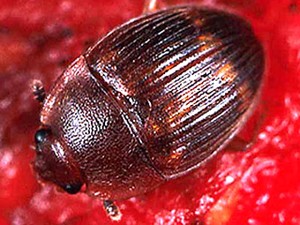
Adult beetles bore into ripe and overripe fruit, feeding and depositing eggs. These insects also disseminate fruit-rotting fungi and bacteria. Late maturing varieties tend to be more susceptible to sap beetle damage as beetle populations are generally at their peak in late summer.
Yellow jackets (e.g. Vespula spp. and Dolichovespula spp.) along with hornets (Vespa spp.) are voracious feeders of raspberry fruits, and create dangerous situations to pickers.
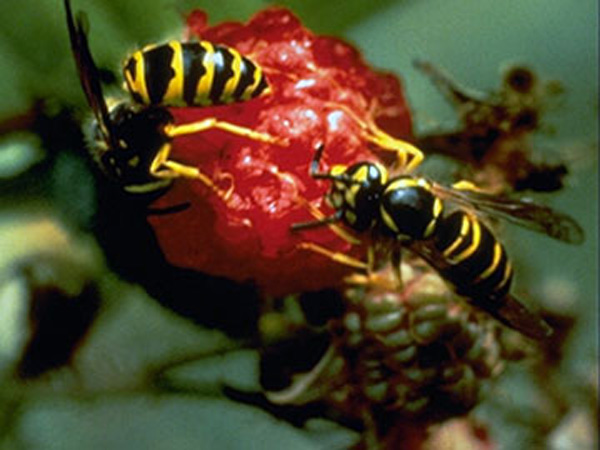
Yellow jackets can build papery nests on buildings, in doorways, and on branches of trees or bushes.
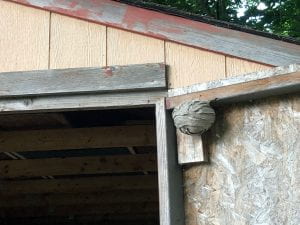
More yellow jacket information
Fruitworms feed within raspberry fruits, rendering the berries unmarketable. Larva hatch and bore into the receptacle tissue. When fruit is picked, larva often remain attached to the cup-like interior of the fruit and become a contaminant to harvested berries.
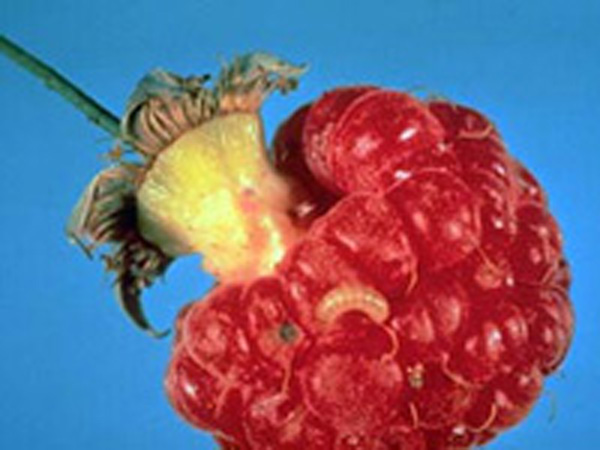
Japanese beetles will gladly eat raspberry fruit, but these insect pests cause the most damage to a planting in their larval stage, when they feast on root tissue.
